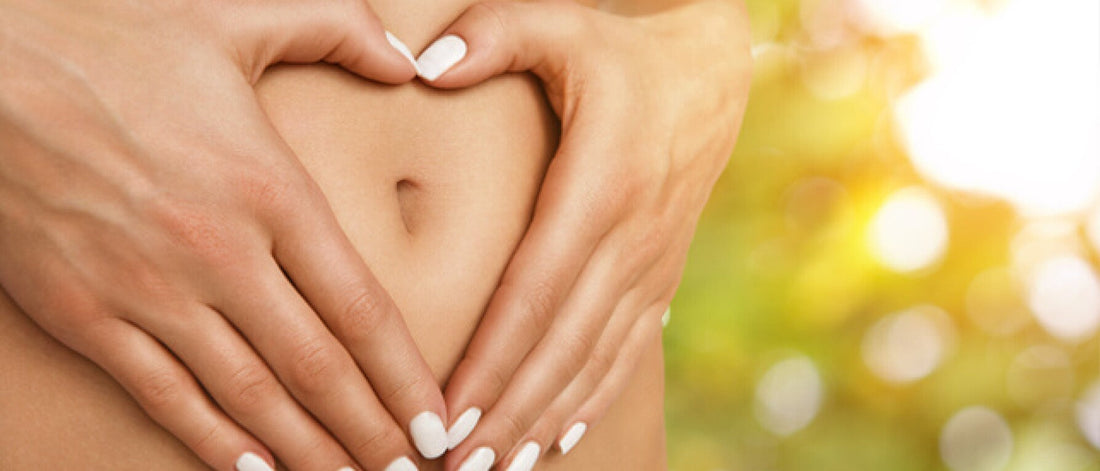The microbiome is the world of microorganisms—too small to be seen without a microscope—that exists in our environment, as well as on, in, and within our body tissue.
When the microbes on, or in, the body have established themselves as residents, they‘re considered the microbiome—the microbial populations in that environment. If you haven’t heard of the term microbiome before, add it to your vocabulary now; you’ll be hearing a lot more about it in the years to come.
The fact that we’re surrounded by, and immersed in, a world of microbes has been known for a long time. The new and surprising revelation is that we’re much more interdependent with the microbiome than scientists ever knew or believed.
The human body and its microbiome are in nearly constant communication with each other. The discovery is revolutionary and has dramatically altered our understanding of health and disease. It’s redefined what it means to be human, and the nature of our body
Here’s what we know about microbes and why they’re important. In the second part of this series on the microbiome, I’ll dig deeper into microbes and their connection to our gut, brain, and health.
Life on earth ranges from simple organisms of a single cell or less to multicellular organisms of increasing complexity and size. There are a variety of other major life forms, including commonly known protozoans, bacteria, viruses, fungi, plants, and animals.
The population pattern displayed by microbes, as well as other cells, is known as exponential or logarithmic growth. One cell divides and becomes two cells, the two cells divide and become four, the four become eight, and so forth.
Measured by cell populations, the average human is 10 percent human cells and 90 percent microbial cells. The human genome has about 25,000 genes and the microbiome has more than 1 million.
Although microbes are diminutive in size, they’re metabolically active, and their impact on our health, including how our digestive tract functions, is magnified because of their enormous population. The entire human population is under eight billion. When you pick up a handful of soil—you’re holding more microbes than the earthly human population!
The vast majority of microbes are beneficial to humans, performing valuable roles such as metabolizing the food products that our intestinal tract cannot. When they provide a benefit, it’s called a symbiotic relationship. When they don’t benefit or harm us, the relationship is commensal. When microbes are harmful in their guest relationship with humans, we describe them as pathogens. Fortunately, there are very few microbial pathogens.
The skin microbiome is just one of the many microbiomes of the body, and one of the most accessible. When you bathe, shower, or wash your hands, you remove many of these microbes. However, a sizable population remains even when you wash your hands.
The skin has different features and characteristics dependent on body location, and the microbiome is unique to each area as well. Various skin products, including soaps with anti-microbial activity, lotions, massage oils, as well as swimming, bathing, clothing, and other environmental factors can influence the skin microbiome. In Ayurveda, the various oils and botanicals applied in massage and skin therapies undoubtedly affect the skin microbiome.
As you can imagine, a lot of microbes live in the mouth, between the teeth, under the gums, and in the nasal passages. A large number of microbes enter your mouth on the surface or within the food you eat, and join with the microbes that have already made this part of your body home. These microbes are feasting on small particles of food and debris left over from the chewing process, even when you brush and floss.
The microbes in the mouth and within food are regularly swallowed and travel down the digestive tract on an amazing voyage that would make any theme park ride pale in comparison. The microbes making this journey contribute to the gut microbiome, which is the largest microbiome of the body, numbering more than 100 trillion organisms. This astronomical number is greater than the number of stars in the universe, and collectively weighs in at about three pounds.
The gut microbiome does much more than just ferment or metabolize the food products that our intestinal tract cannot digest. The gut microbiome engages in an active two-way communication with the human brain. The gut is highly involved with the two major neurotransmitters of the human body. Surprisingly, the majority of the signals are not sent from the brain to the gut, but in the other direction.
The microbiome communication between the gut and the brain takes place in the common language of most living organisms: through chemical neurotransmitters, hormones, and metabolites. This is a language the microbes, body, and brain instantly recognize and understand.
The gut microbiome is part of what is now known as the “second brain,” which is made up of the gut-microbiome-brain axis. This second brain is adding a scientific understanding to what has commonly been described as gut feelings or gut instincts.
Learn more about the gut microbiome, second brain, and gut feelings in Part 2 of the Microbiome Series, Gut Instincts: Why Microbes Matter to Your Health.
*Editor’s Note: The information in this article is intended for your educational use only; does not necessarily reflect the opinions of the Chopra Center's Mind-Body Medical Group; and is not a substitute for professional medical advice, diagnosis, or treatment. Always seek the advice of your physician or other qualified health providers with any questions you may have regarding a medical condition and before undertaking any diet, supplement, fitness, or other health program.
When the microbes on, or in, the body have established themselves as residents, they‘re considered the microbiome—the microbial populations in that environment. If you haven’t heard of the term microbiome before, add it to your vocabulary now; you’ll be hearing a lot more about it in the years to come.
The fact that we’re surrounded by, and immersed in, a world of microbes has been known for a long time. The new and surprising revelation is that we’re much more interdependent with the microbiome than scientists ever knew or believed.
The human body and its microbiome are in nearly constant communication with each other. The discovery is revolutionary and has dramatically altered our understanding of health and disease. It’s redefined what it means to be human, and the nature of our body
Here’s what we know about microbes and why they’re important. In the second part of this series on the microbiome, I’ll dig deeper into microbes and their connection to our gut, brain, and health.
Our World
The diversity of appearance and activities of life forms is staggering—even if you only consider those that are visible to us.Life on earth ranges from simple organisms of a single cell or less to multicellular organisms of increasing complexity and size. There are a variety of other major life forms, including commonly known protozoans, bacteria, viruses, fungi, plants, and animals.
The Microbe World
There's an even more heavily populated, much smaller world that contains microbes. Microbes can only be seen with the assistance of a microscope, and yet their invisible individual presence has a profound effect on our health and wellness. A microbe’s ability to overwhelm an organism many times its size is partly due to its rapid rate of reproduction.The population pattern displayed by microbes, as well as other cells, is known as exponential or logarithmic growth. One cell divides and becomes two cells, the two cells divide and become four, the four become eight, and so forth.
Measured by cell populations, the average human is 10 percent human cells and 90 percent microbial cells. The human genome has about 25,000 genes and the microbiome has more than 1 million.
Although microbes are diminutive in size, they’re metabolically active, and their impact on our health, including how our digestive tract functions, is magnified because of their enormous population. The entire human population is under eight billion. When you pick up a handful of soil—you’re holding more microbes than the earthly human population!
The vast majority of microbes are beneficial to humans, performing valuable roles such as metabolizing the food products that our intestinal tract cannot. When they provide a benefit, it’s called a symbiotic relationship. When they don’t benefit or harm us, the relationship is commensal. When microbes are harmful in their guest relationship with humans, we describe them as pathogens. Fortunately, there are very few microbial pathogens.
Microbes and Your Skin
It shouldn’t surprise you that your skin has microbes on it; after all, it’s exposed to the external environment. What’s confounding is the variety and number of microbes that consider your skin home.The skin microbiome is just one of the many microbiomes of the body, and one of the most accessible. When you bathe, shower, or wash your hands, you remove many of these microbes. However, a sizable population remains even when you wash your hands.
The skin has different features and characteristics dependent on body location, and the microbiome is unique to each area as well. Various skin products, including soaps with anti-microbial activity, lotions, massage oils, as well as swimming, bathing, clothing, and other environmental factors can influence the skin microbiome. In Ayurveda, the various oils and botanicals applied in massage and skin therapies undoubtedly affect the skin microbiome.
Microbes and Your Digestive Tract
What many people find surprising is that the intestinal tract, normally considered an internal organ, is actually an external one just like the skin. The reason for this “inside-out” logic is that the external environment continues all the way through the gut, from mouth to anus. The material within the digestive tract is considered outside of the body until it’s absorbed through the intestinal lining. Because this outside material is a potential source of infection and allergies, the body has a powerful and vigilant immune system that is extremely active in the gut.As you can imagine, a lot of microbes live in the mouth, between the teeth, under the gums, and in the nasal passages. A large number of microbes enter your mouth on the surface or within the food you eat, and join with the microbes that have already made this part of your body home. These microbes are feasting on small particles of food and debris left over from the chewing process, even when you brush and floss.
The microbes in the mouth and within food are regularly swallowed and travel down the digestive tract on an amazing voyage that would make any theme park ride pale in comparison. The microbes making this journey contribute to the gut microbiome, which is the largest microbiome of the body, numbering more than 100 trillion organisms. This astronomical number is greater than the number of stars in the universe, and collectively weighs in at about three pounds.
The gut microbiome does much more than just ferment or metabolize the food products that our intestinal tract cannot digest. The gut microbiome engages in an active two-way communication with the human brain. The gut is highly involved with the two major neurotransmitters of the human body. Surprisingly, the majority of the signals are not sent from the brain to the gut, but in the other direction.
The microbiome communication between the gut and the brain takes place in the common language of most living organisms: through chemical neurotransmitters, hormones, and metabolites. This is a language the microbes, body, and brain instantly recognize and understand.
The gut microbiome is part of what is now known as the “second brain,” which is made up of the gut-microbiome-brain axis. This second brain is adding a scientific understanding to what has commonly been described as gut feelings or gut instincts.
Learn more about the gut microbiome, second brain, and gut feelings in Part 2 of the Microbiome Series, Gut Instincts: Why Microbes Matter to Your Health.
*Editor’s Note: The information in this article is intended for your educational use only; does not necessarily reflect the opinions of the Chopra Center's Mind-Body Medical Group; and is not a substitute for professional medical advice, diagnosis, or treatment. Always seek the advice of your physician or other qualified health providers with any questions you may have regarding a medical condition and before undertaking any diet, supplement, fitness, or other health program.






















